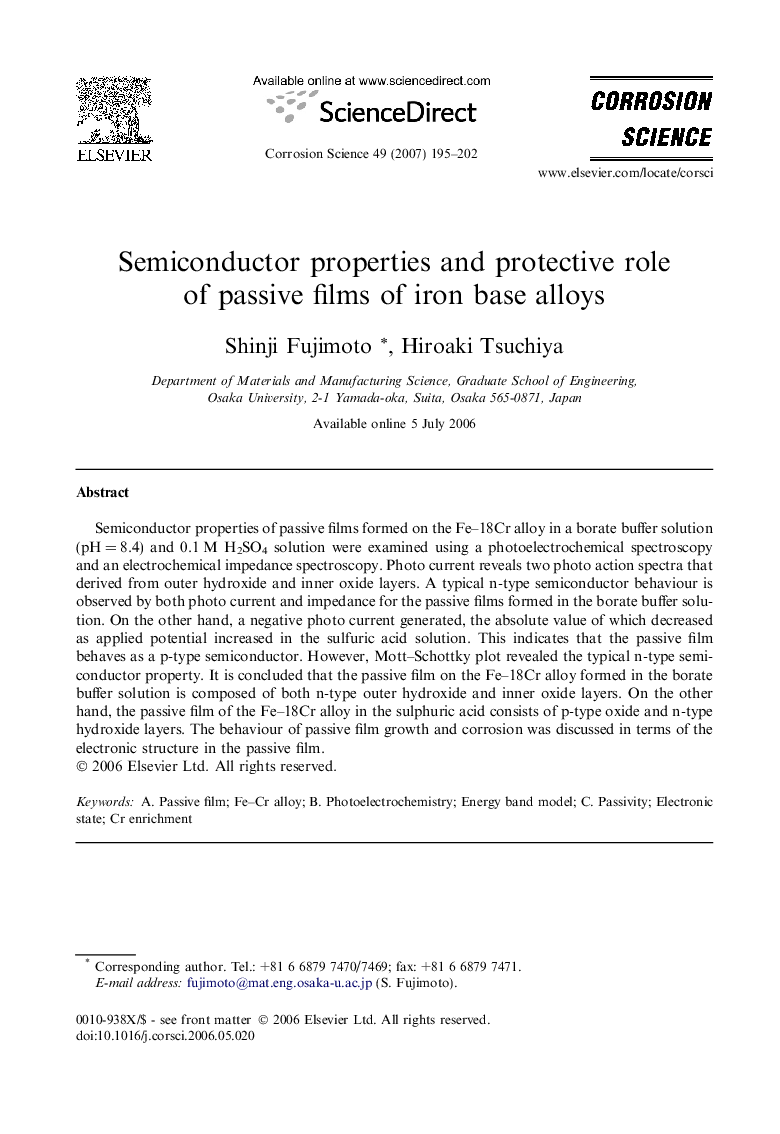| Article ID | Journal | Published Year | Pages | File Type |
|---|---|---|---|---|
| 1472165 | Corrosion Science | 2007 | 8 Pages |
Semiconductor properties of passive films formed on the Fe–18Cr alloy in a borate buffer solution (pH = 8.4) and 0.1 M H2SO4 solution were examined using a photoelectrochemical spectroscopy and an electrochemical impedance spectroscopy. Photo current reveals two photo action spectra that derived from outer hydroxide and inner oxide layers. A typical n-type semiconductor behaviour is observed by both photo current and impedance for the passive films formed in the borate buffer solution. On the other hand, a negative photo current generated, the absolute value of which decreased as applied potential increased in the sulfuric acid solution. This indicates that the passive film behaves as a p-type semiconductor. However, Mott–Schottky plot revealed the typical n-type semiconductor property. It is concluded that the passive film on the Fe–18Cr alloy formed in the borate buffer solution is composed of both n-type outer hydroxide and inner oxide layers. On the other hand, the passive film of the Fe–18Cr alloy in the sulphuric acid consists of p-type oxide and n-type hydroxide layers. The behaviour of passive film growth and corrosion was discussed in terms of the electronic structure in the passive film.
